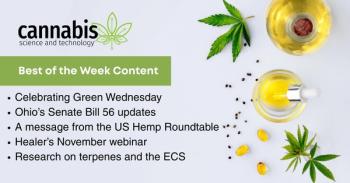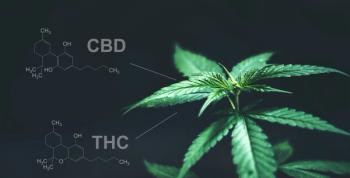
Cannabis Science and Technology
- Psychedelics: New Frontiers in Alternative Medicine
- Volume 5
- Issue s1
A Highly Contiguous Draft Reference Genome for the Psilocybe Cubensis Mushroom Is Now Available
A brief summary of a new peer-reviewed paper detailing the assembly of a highly contiguous draft reference genome for the Psilocybe cubensis mushroom by Kevin McKernan, Medicinal Genomics Chief Science Officer, and colleagues.
Kevin McKernan, Medicinal Genomics Chief Science Officer, is the principal author of a new peer-reviewed paper (1) detailing the assembly of a highly contiguous draft reference genome for the Psilocybe cubensis mushroom. Additional contributors include Liam T. Kane, Seth Crawford, Chen-Shan Chin, Aaron Trippe, and Stephen McLaughlin.
Until recently, the only Psilocybe cubensis genome in existence was incomplete. The new assembly boasts a completeness score of over 97.6% and is 75 times more contiguous than the prior genomes. The mating loci have been identified and we have a nice variation map of the genes involved in psilocybin production. This is an important step forward in understanding how to breed these organisms and synthesize the psilocybin and other tryptamines, which appear to be efficacious in the treatment for a range of notoriously difficult to treat conditions such as depression, anxiety, and post-traumatic stress disorder (PTSD). In fact, the compound has such promise that the Food and Drug Administration (FDA) is considering approval of various therapies and treatments based on the drug.
Hundreds of mushroom species make psilocybin, but it is vital to genetically identify them. Many other mushrooms look like Psilocybe cubensis, but are lethal to humans. Understanding these different species at the genetic level is necessary to furthering research and keeping patients and clinicians alike safe. And now, because of this new reference sequence, that is entirely possible.
Medicinal Genomics has already begun trying to understand the different psilocybin-producing mushrooms. The team recently published a paper (1), now under peer-review, in which they sequenced 81 additional mushroom spore samples over five species: Psilocybe tampanensis, Psilocybe cubensis, Psilocybe azurescens, Psilocybe galindoi, and Psilocybe mexicana. The paper has found alternative psilocybin synthase pathways and demonstrates the value of high-quality. The company has also launched Psilocydia (2), the largest digital repository of psychoactive mushroom genomes.
In the process of sequencing 81 different spore samples, psilocybe microbiomes became apparent. These bacterial passengers may assist in understanding the common contaminants that plague mushroom growth. Bacteria replicate or double every 20 to 30 minutes, but fungi often require 2–3 hours to double. Any bacterial contamination in a fungal growth can wreak havoc and overtake the growth. This requires attention to sterile technique during fungal growth and active screening of bacterial contaminants that might co-inhabit a spore sample.
To address the problem, Medicinal Genomics is developing a new multiplex quantitative polymerase chain reaction (qPCR) assay that targets 16S ribosomal RNA as well as two genes in the Psilocybin synthesis pathway unique to Psilocybe cubensis (P. cubensis). As a result, the assay will ensure the elimination of potential bacterial contaminants that might impact yield or growth. It will also confirm proper fungal growth because the primers are known to not amplify other toxic mushrooms that might be mistaken for P. cubensis.
References
About the Author
Frank Priscaro is with Medicinal Genomics. Direct correspondence to:
Articles in this issue
over 3 years ago
May/June 2022 Digital Editionover 3 years ago
The Path to Legalized, Accessible Psilocybin Therapyover 3 years ago
Anticipating Legalization: Making Psilocybin Accessibleover 3 years ago
Psilocybin Therapy for PTSD and DepressionNewsletter
Unlock the latest breakthroughs in cannabis science—subscribe now to get expert insights, research, and industry updates delivered to your inbox.





